图论基本概念
图论中的基本概念
图的基本概念
- 图:具有顶点集$V$的图亦称为$V$上的图(a graph on V),图$G$的顶点集记为$V(G)$, 边集记为$E(G)$;
- 邻接Adjacency:如果${x,y}$是$G$的一条边,则称两个顶点$x$和$y$是相邻的(adjacent)或邻点 (neighbour),$x,y$称为边的endpoint;如果两条边$e \ne f$有一个公共端点,则称$e$和$f$是相邻的;
- 领域、邻点集Neiborhood:The set of all neighbors of a vertex $v$ of $G = (V,E)$, denoted by $N(v)$, is called the neighborhood of $v$. 即顶点$v$的所有邻点构成的集合。If $A$ is a subset of $V$ , we denote by $N(A)$ the set of all vertices in G that are adjacent to at least one vertex in $A$. So,$N(A)=\bigcup_{\nu\in A}N(\nu)$.
- 度:A vertex with degree $0$ is called isolated.(孤立点); A vertex of degree $1$ is called pendant.(悬挂点);
- 生成子图Spanning subgraph:删边不删点;
- 导出子图Induced subgraph:若$G’ \subset G$且$G’$包含了$E$中所有满足$x,y \in E$的边$xy$,则称$Q$是$G$的导出子图(induced subgraph);(人话,删点不删边);
- 图的收缩The contraction of G:
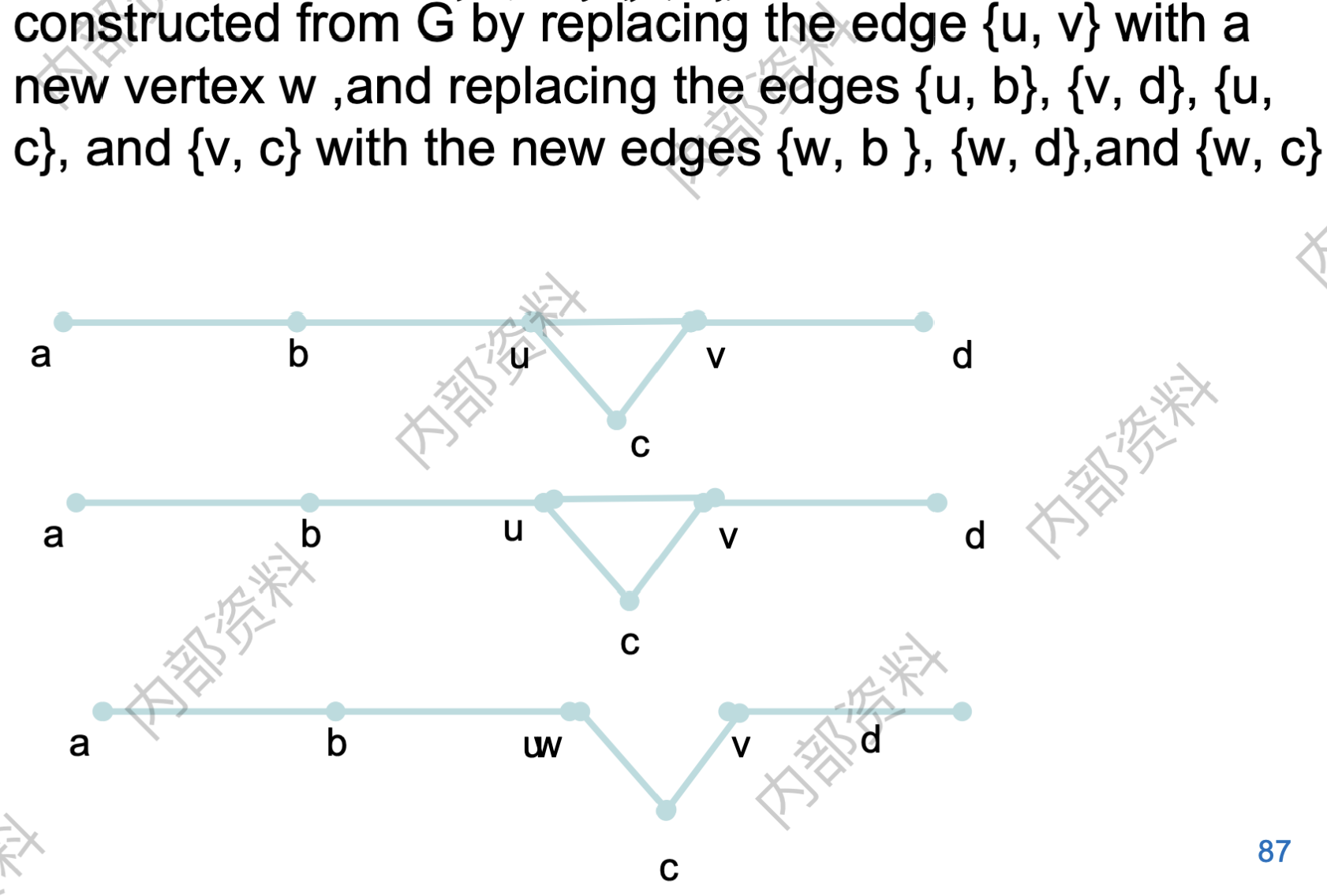
- 补图Graph complement:相对于完全图的补

- 关联矩阵Incidence matrices:
 即第$i$行表示第$i$个顶点与哪些边连接,第$j$列表示第$j$条边连接哪些顶点。
即第$i$行表示第$i$个顶点与哪些边连接,第$j$列表示第$j$条边连接哪些顶点。
握手定理Handshaking Theorem:
无向图中,如果有度为奇数的点,那么这些点的个数必为偶数个。
- 有向图的度:The in-degree of $v$, $deg^- (v)$, is the number of edges going to $v$(入度); The out-degree of $v$, $deg^+ (v)$, is the number of edges coming from $v$(出度); The degree of $v$, $deg(v):deg^-(v)+deg^+ (v)$, is the sum of v’s in-degree and out-degree.
有向图握手定理:
- 阶:一个图的顶点个数称为它的阶(order),记为$\left | G \right |$,它的边数记为$\Vert G \Vert$;
- 平凡图:阶为0或1的图称为平凡的 (trivial);
- 独立:互不相邻的顶点/边称独立顶点/独立边(independent vertex/edge)。若一个顶点集或边集中没有两个元素是相邻的,则该集合称为独立集(independent set);独立的顶点集也称作稳定集(stable set);
一些特殊的图结构Special Graph Structures
- 完全图$K^n$:若$G$的所有顶点都是两两相邻的,则称$G$是完全的(complete),n个顶点的完全图记为$K^n$;

- 环图$C^n$:
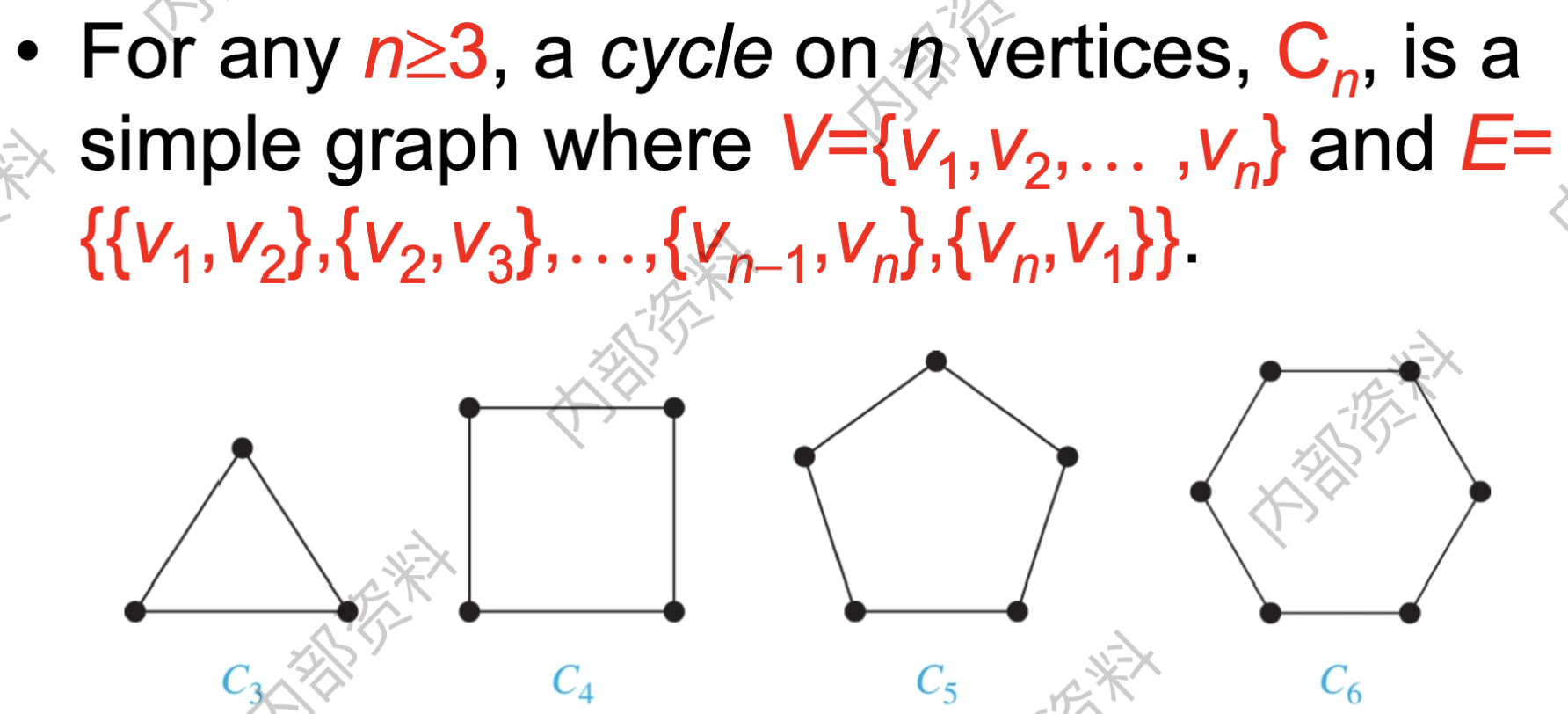
- 轮图$W^n$:
 $W^n$有$n+1$个顶点,中心点度为$n-1$,边上$n$个点度为$3$。
$W^n$有$n+1$个顶点,中心点度为$n-1$,边上$n$个点度为$3$。 - n维体图 n-Cubes/hypercubes$Q^n$:
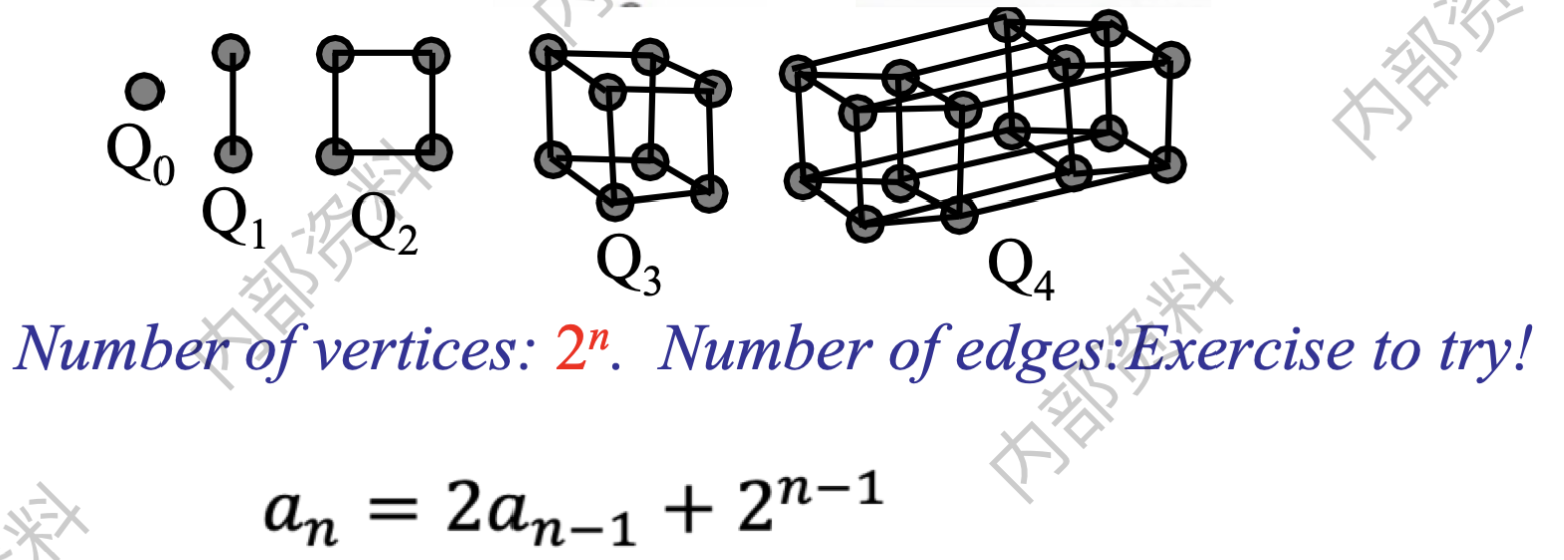
- Plato graphs(柏拉图图):
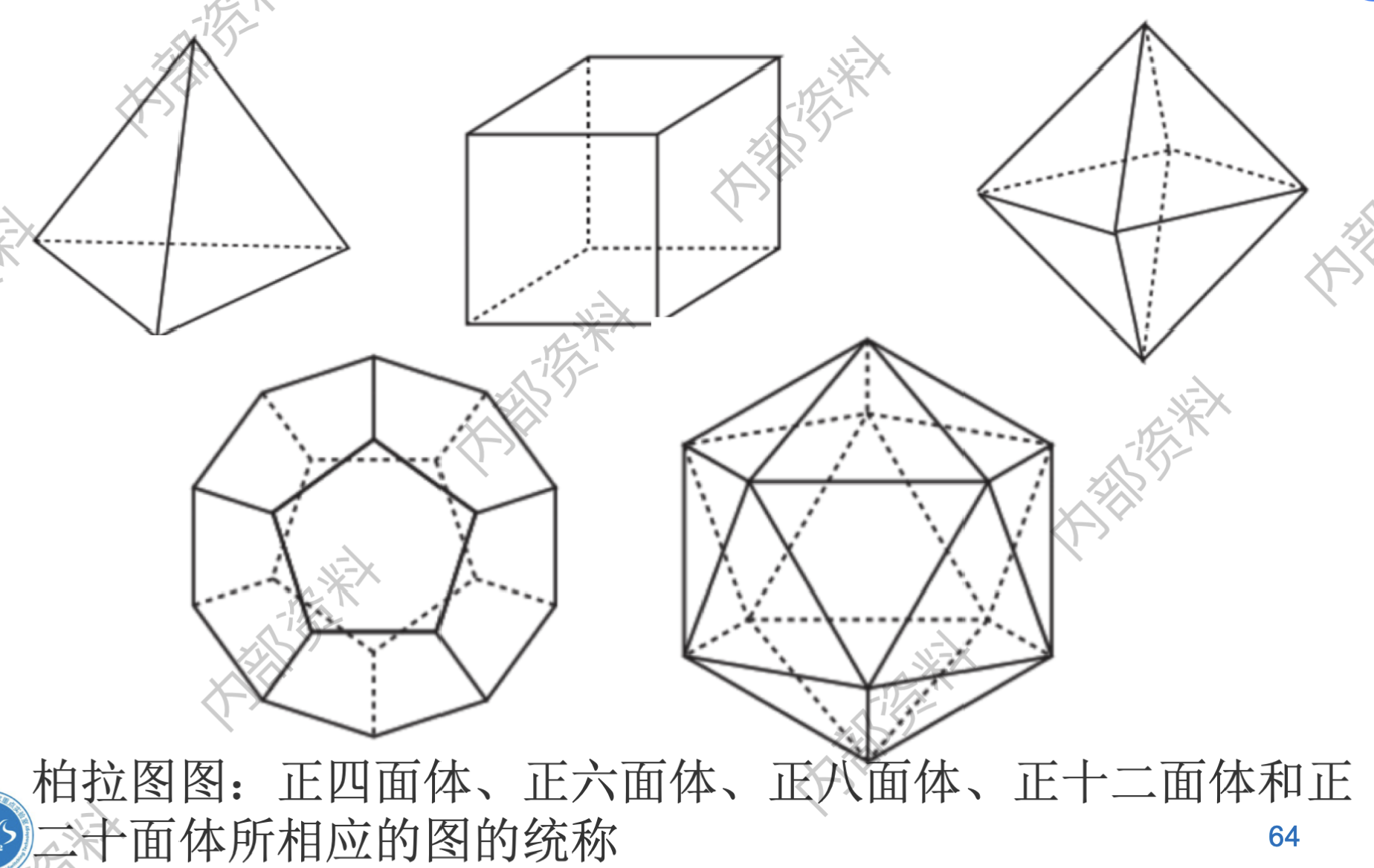
- 彼德森图(Petersen):
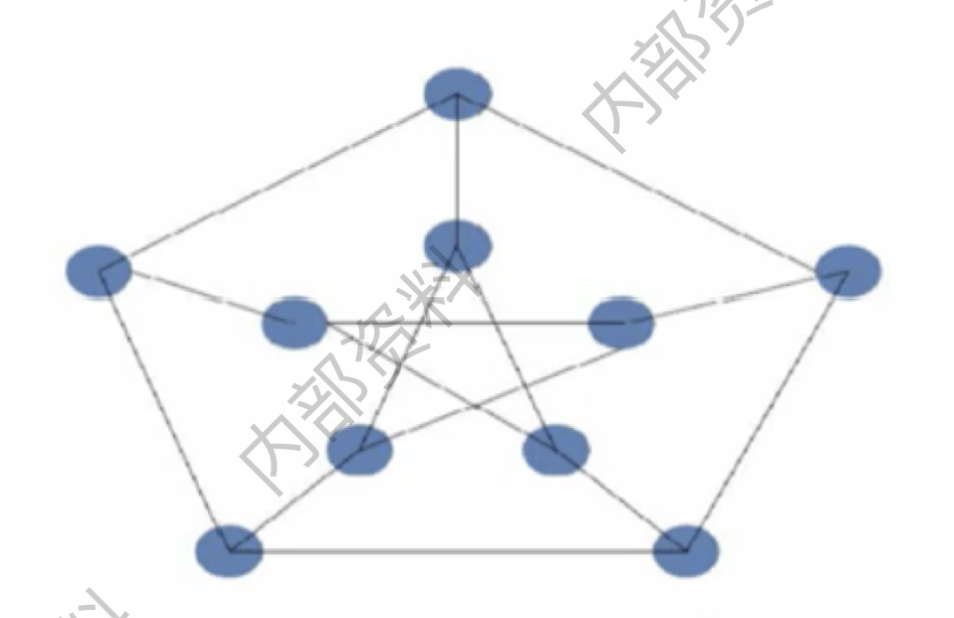
- Bipartite Graphs二分图:
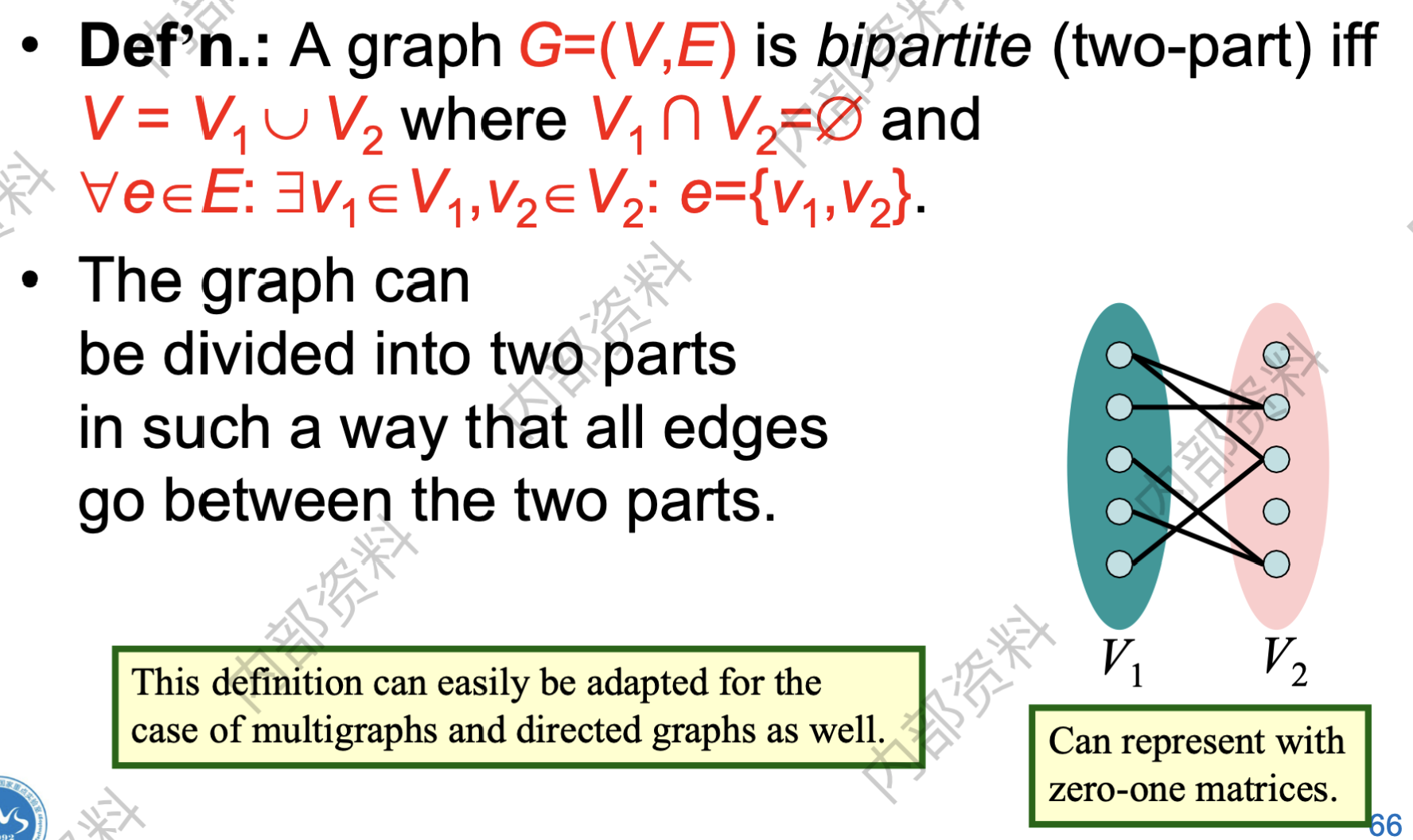 判断方法:1. 可以用两种颜色染色; 2. 图中不存在长度为奇数的回路;
判断方法:1. 可以用两种颜色染色; 2. 图中不存在长度为奇数的回路; - Complete Bipartite Graphs 完全二分图:
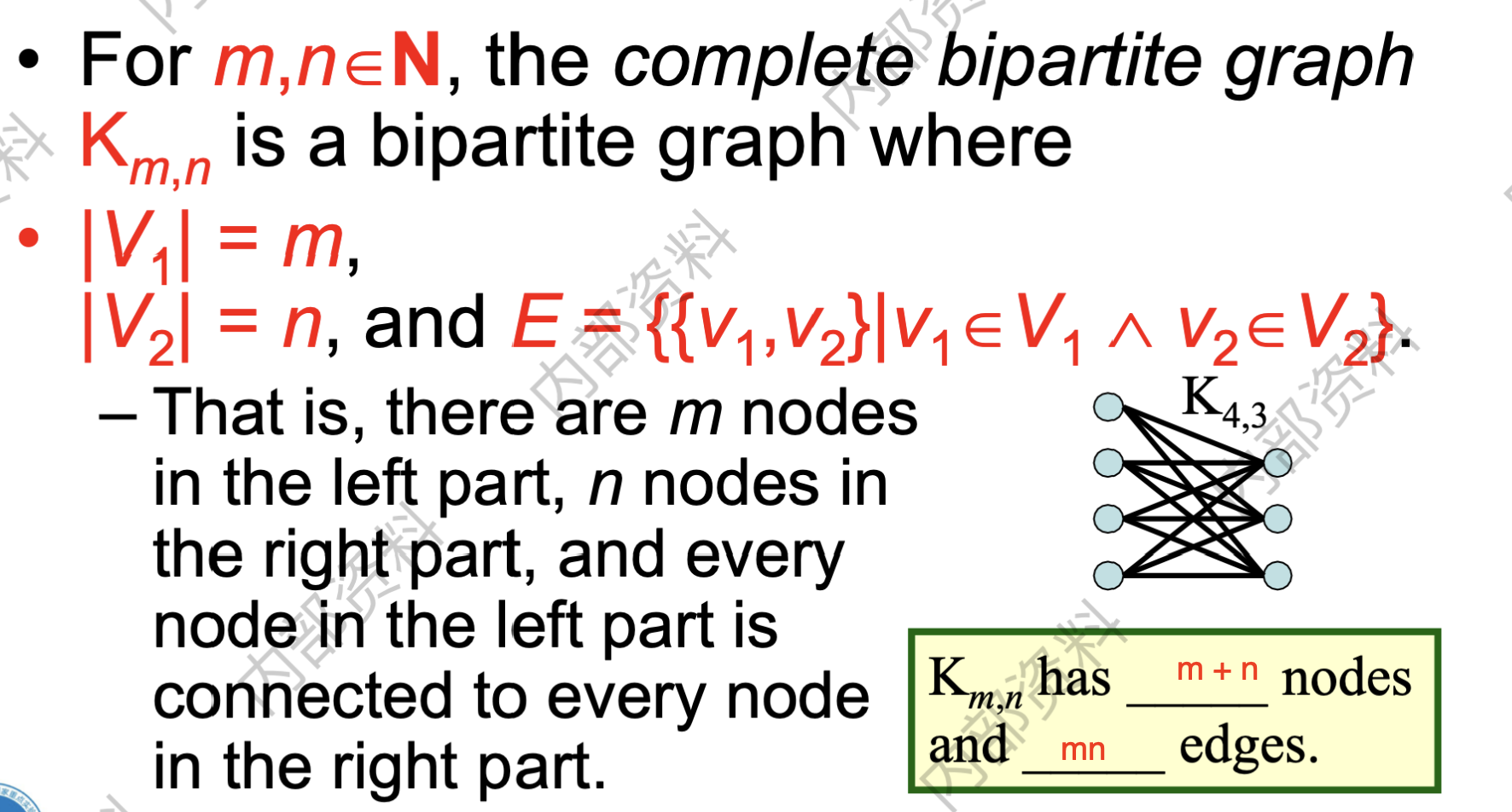
图的同构Graph Isomorphism
- 图的同构:

- 图不变量graph invariants:对于图上的一个映射,如果对每个同构图它均取相同的值,则这样的映射称为一个图不变量(graph invariant)。一个图的顶点数和边数就是两个简单的图不变量;图中两两相邻的最大顶点数也是图不变量。
图的连通性Connectivity
- 路:这里所有的$x_i$均互不相同,顶点$x_0和$$x_n$由路$P$连接(link),并称它们为路的端点(endvertex)或顶端(end);而$x_1,x_2,\dots,x_{n-1}$称为$P$的内部(inner)顶点。一条路上的边数称为路的长度(length),长度为k的路记为$P^k$;
- 简单路:A path is simple if it contains no edge more than once.
- 独立路:如果其中任意一条路不包含另一条路的内部顶点, 则称它们是独立路(independent path);
- 连通图:如果非空图$G$中的任意两个顶点之间均有一条路相连,我们称$G$是连通的(connected);
- 连通分支/独立子图Connected component:设$G = (V,E)$是一个图,则它的极大连通子图称为分支(component);
- 割点cut vertex:the removal from a graph of a vertex and all incident edges produces a subgraph with more connected components.
- 割边cut edge:an edge whose removal produces a graph with more connected components;
- 点连通度:使得G是k-连通的最大整数k称为G的连通度(connectivity),并记为$\kappa (G)$;
- 边连通度:记为$\lambda(G)$;
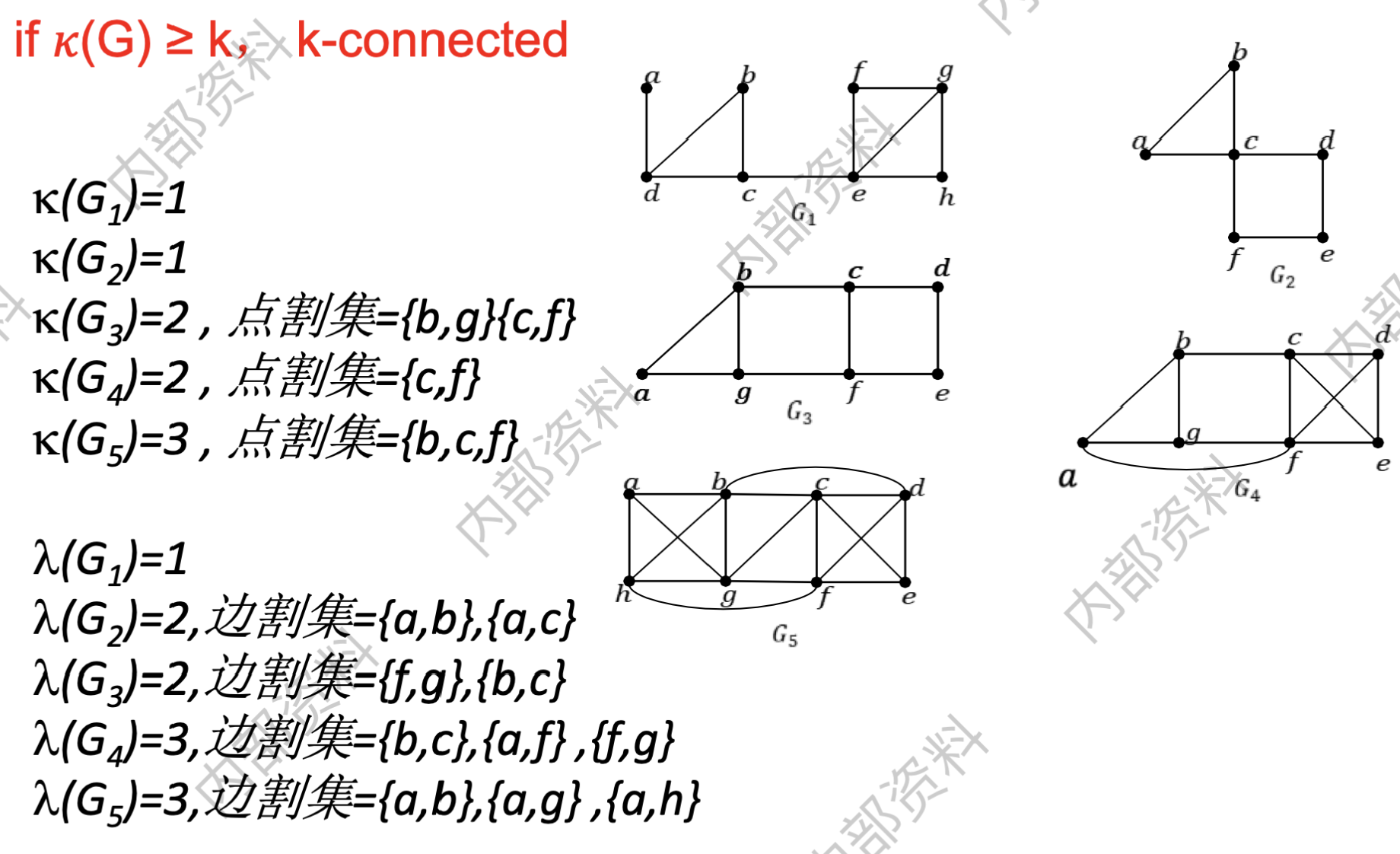
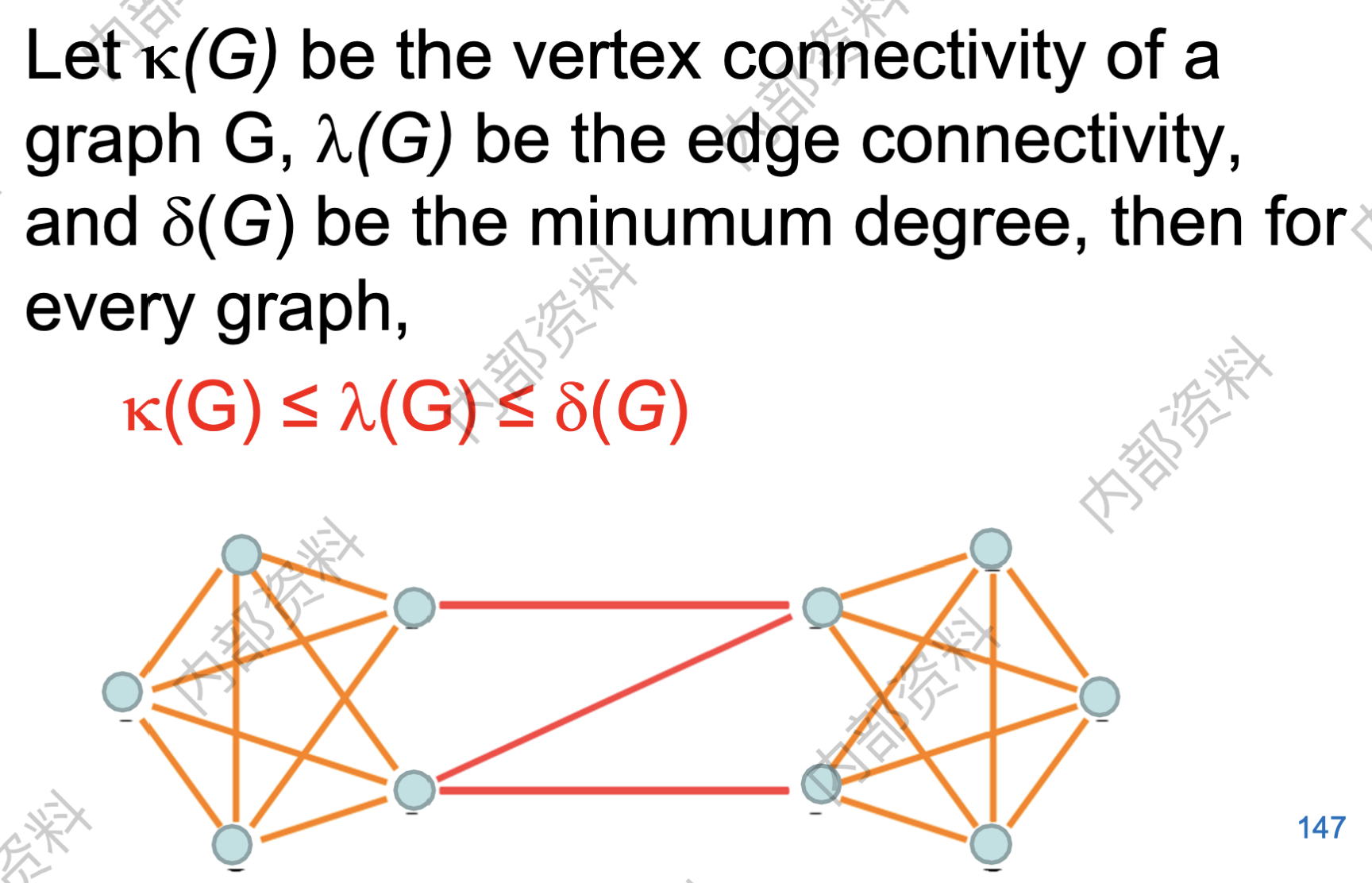
- 有向图中的强连通、弱连通:强连通要求A directed graph is strongly connected if there is a path from a to b and from b to a whenever a and b are vertices in the graph. 弱连通与无向图类似;
- 圈:$x_0x_1\dots x_{k-1}x_0$;
- 围长和圈长:图$G$中最短圈的长度叫做围长(girth),记为$g(G)$,而$G$中最长圈的长度称为周长(circumference);
- 弦:图中不在圈上但连接圈中两个顶点的边称为这个圈的弦(chord);
- 导出圈:$G$的导出圈(induced cycle)是不含弦的圈,即$G$的导出子图是个圈;
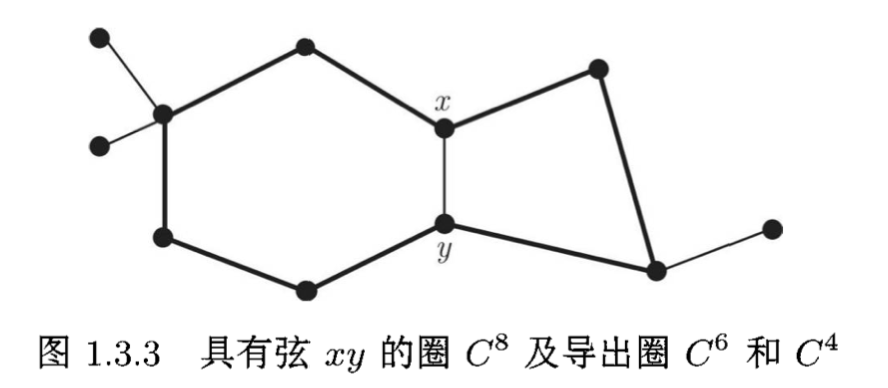
- 距离、直径、中心点、半径:暂略;
- 树、森林:暂略;
图论基本概念
https://blog.yokumi.cn/2024/12/05/图论基本概念/

